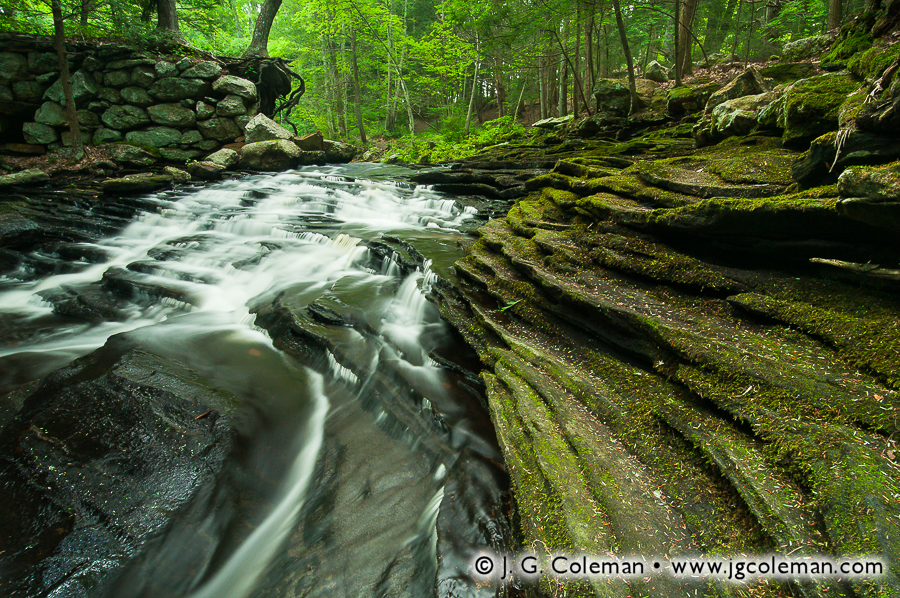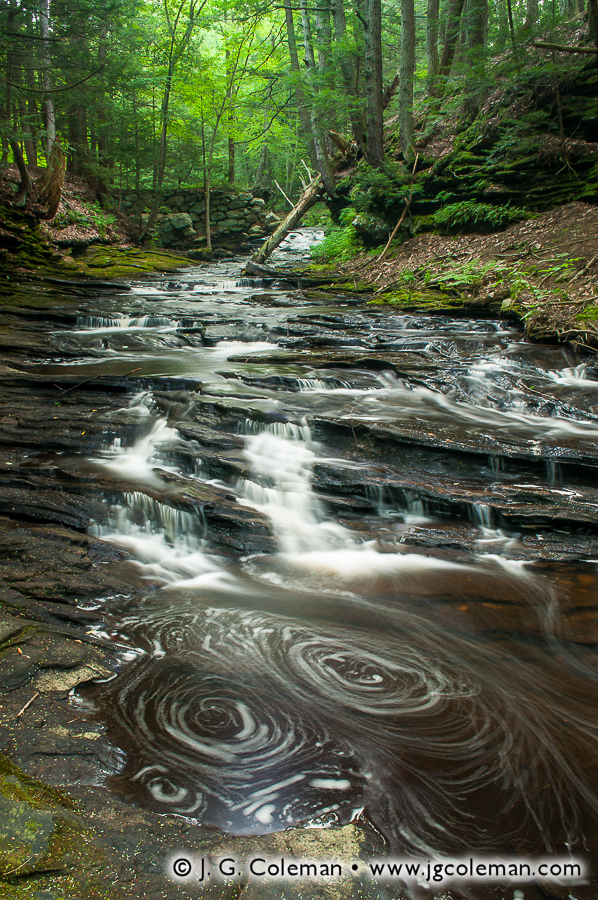
Grayville Falls Park, Hebron, Connecticut
©2014 J. G. Coleman
“A brook there is all children know,
Upon whose banks the wild flowers grow;
A brook that from its hill runs down,
And wanders wanders past the town.”
Grayville Falls is a hidden gem nestled in the wooded wildlands of Hebron, a small town which bridges the low-lying Connecticut River Valley to its west and the hilly uplands of Connecticut’s “Quiet Corner” to its east. Although these falls had been on my must-see list for a few years, my attention was somehow routinely pulled elsewhere even as I passed within only a few miles on my way to shoot at more distant locations. It wasn’t until last summer when I finally managed to get out to the forests of Hebron on a warm July morning to visit Grayville Falls for the first time.
Grayville Everlasting (above), one of my pieces from that shoot, embraces the essence of these tranquil cascades on Raymond Brook, beginning with their steady persistence. Over thousands of years, Grayville Falls has ceaselessly carved its way deeper and deeper through several feet of stratified bedrock, leaving shadowy recesses along the periphery of the brook where weaker layers of stone have been gouged out by running water.

Grayville Falls Park, Hebron, Connecticut
© 2014 J. G. Coleman
There’s also a measure of human history to be found at Grayville Falls, as evidenced by the remnants of a large boulder dam that rises over the cascades in Grayville Everlasting. In Hebron’s earlier days, when industry was still tethered to water power as the sole means of animating machinery, William Gray operated a carpet factory along the banks of Raymond Brook. The dam ruins we find today suggest that Gray utilized a fairly crude dam constructed of boulders and earthen mortar to impound several thousands of gallons of water upstream, ensuring that his factory could run even during dry spells.
Interestingly, old William Gray wouldn’t have recognized the name “Grayville Falls” during his lifetime. That name didn’t appear until the 1970s, when Hebron purchased the property for use as parkland and held a town-wide contest to determine what it would be called. “Grayville Falls Park” emerged as the winning name; a clever tip of the hat to a man that might otherwise have been lost to history.
Want to See More?
To buy a fine art print of the pieces introduced here, or view more work for this location, be sure to visit Grayville Falls Park at my online galleries.

